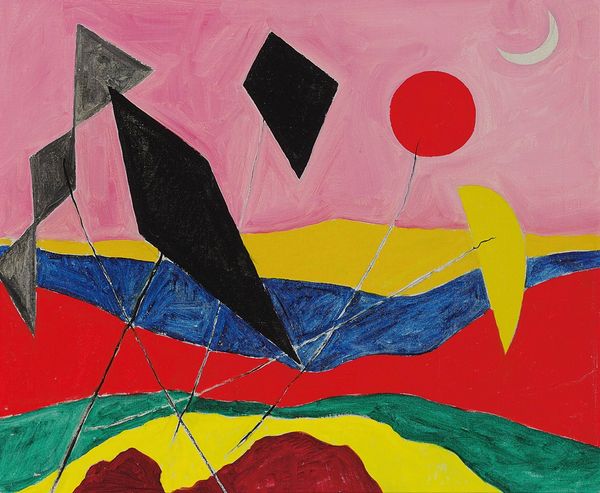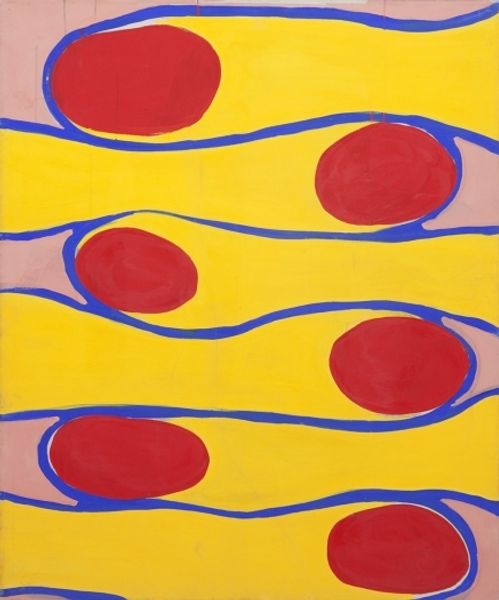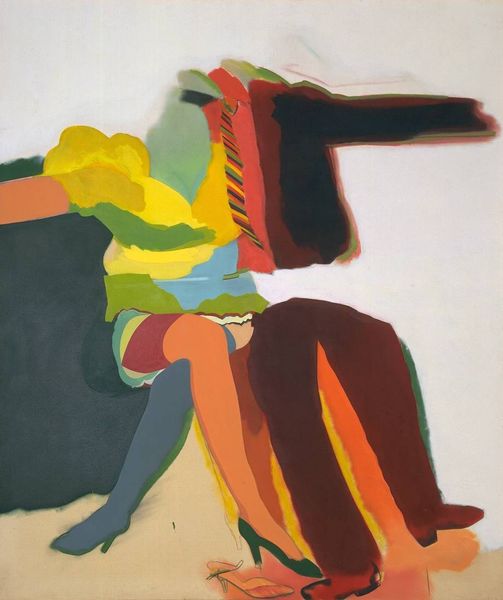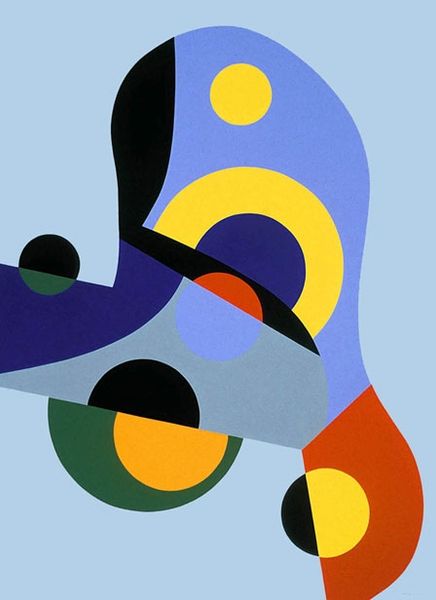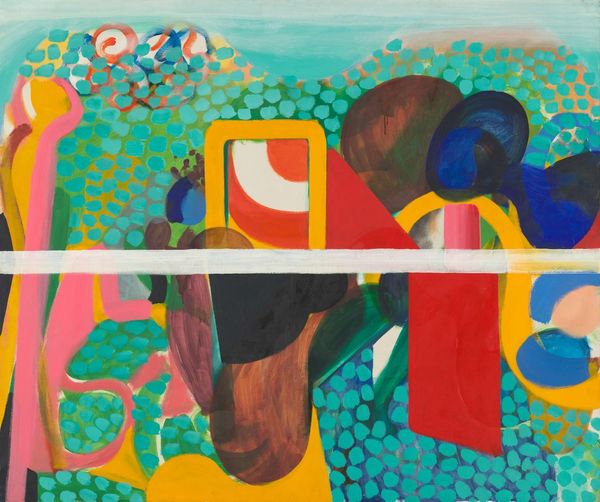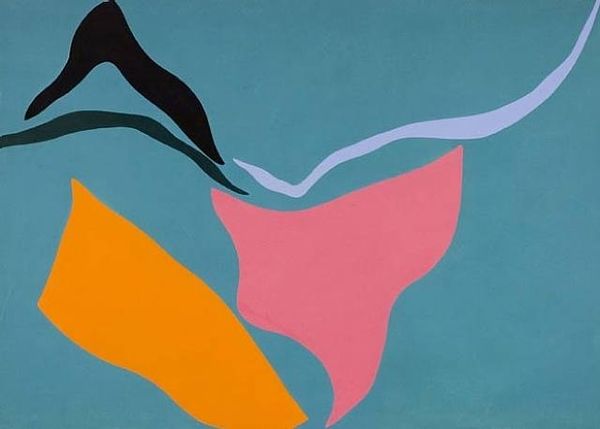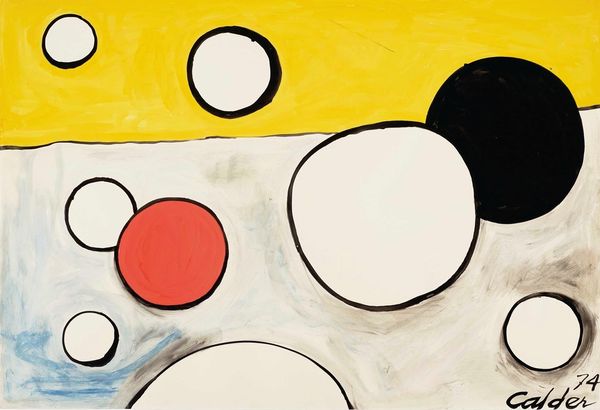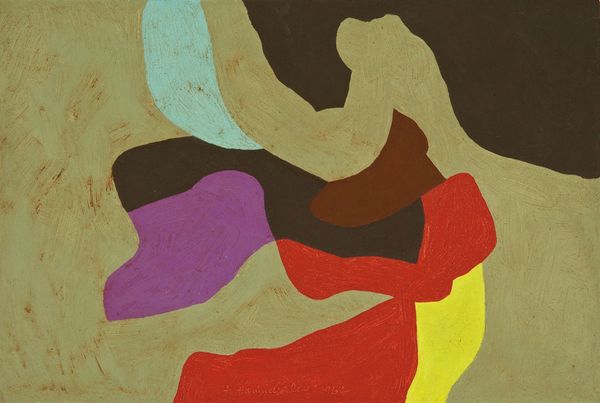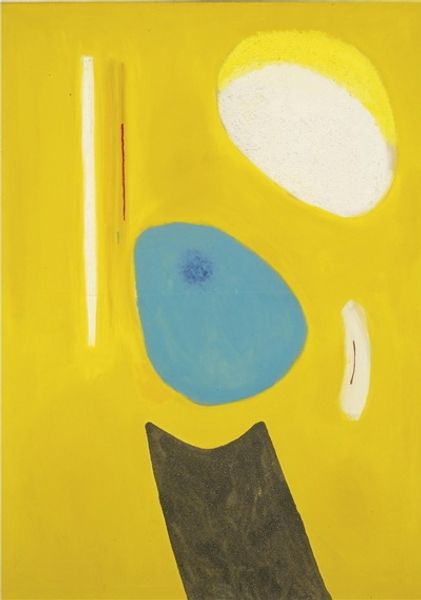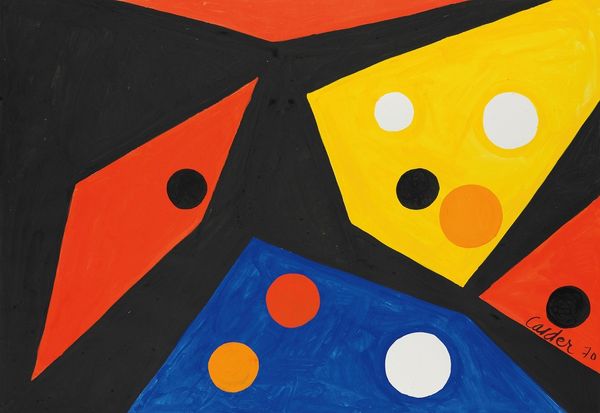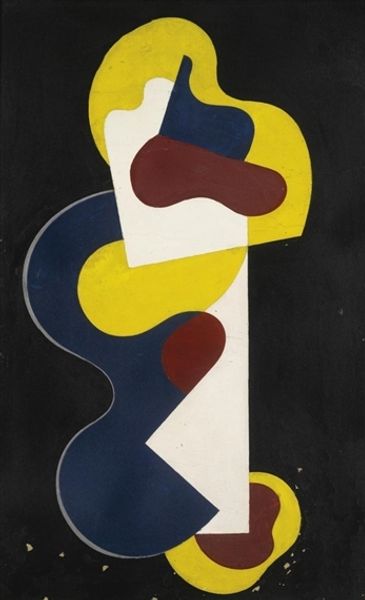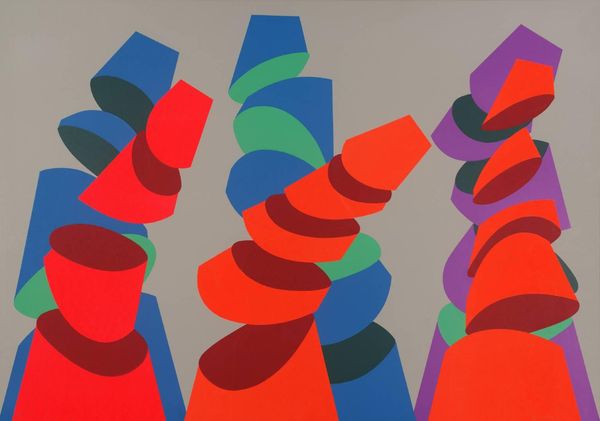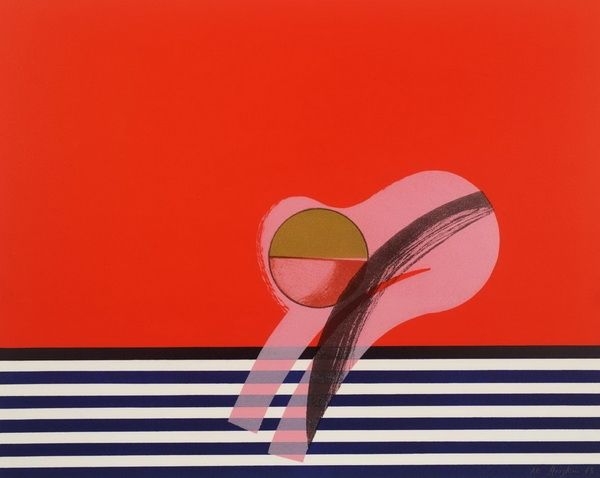
painting, acrylic-paint
#
non-objective-art
#
painting
#
landscape
#
acrylic-paint
#
abstract
#
geometric
#
modernism
Copyright: Modern Artists: Artvee
Curator: What a curious image. Those black and white spindle-like figures, hovering in uncertain terrain… It almost feels like a memory of a landscape. Editor: I’d say "striking" is a better word. The bold color contrasts—the sun, mountain, the undulating lines—immediately capture attention. Let me tell you about the artwork itself. What we have here is Alexander Calder’s "The Black Mountain", an acrylic on canvas work dating to 1945. Curator: Ah, Calder. Known for his kinetic sculptures, but also working with paint here. Thinking of that context… the symbolism feels less static, more like elements in motion. Editor: Yes, but consider the composition. The red orb, presumably the sun, counterbalances the mass of the mountain, and then there's that stream of red and blue horizontals bisecting the painting. There’s a formal rigor at play even with what appears spontaneous. Curator: And what to make of those objects that litter the foreground, looking like chess pieces without a board? They trigger primal symbolic registers; hourglasses counting down. Editor: Or purely abstract shapes floating within a field? One need not overburden the image with excessive projections. Curator: Maybe! But in '45, amidst post-war anxiety, the mountain could easily become a looming shadow of dread, the hourglass representing mortality. Calder gives shape to anxieties that still speak to us. Editor: Granted, color elicits strong emotional response, too. The red evokes passion, aggression. But let's return to its structure. Note the careful arrangement, with colors intensifying towards the middle. This is meticulously thought-out and rendered. Curator: Precisely. That’s what gives this simple arrangement resonance: it's not just the elements alone but how the symbols interact; Calder harnesses his intuitive understanding. Editor: See how differently we approach art? Yet in the end, perhaps our individual analyses augment each other... the aesthetic dimension balanced by socio-cultural elements. Curator: Indeed. Seeing through form helps understand the visual landscape of memory. Editor: A successful excursion, wouldn't you agree?
Comments
No comments
Be the first to comment and join the conversation on the ultimate creative platform.
